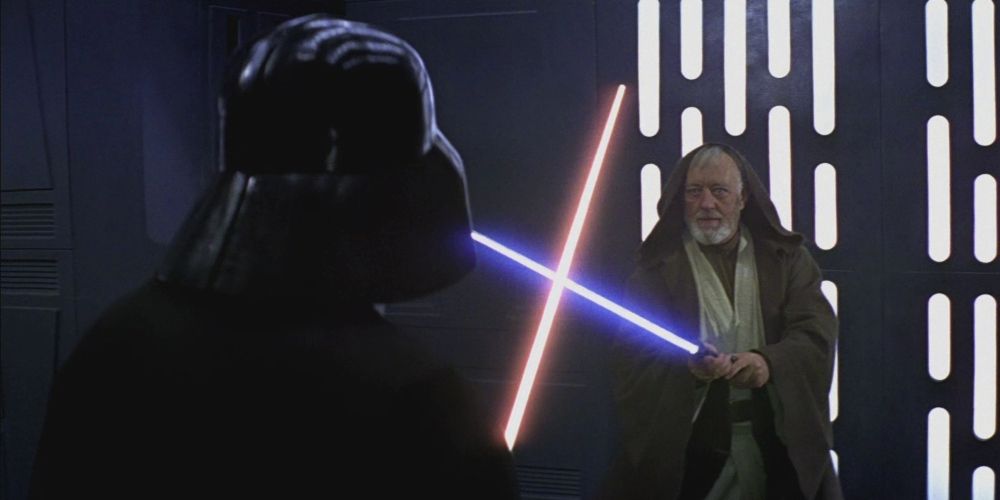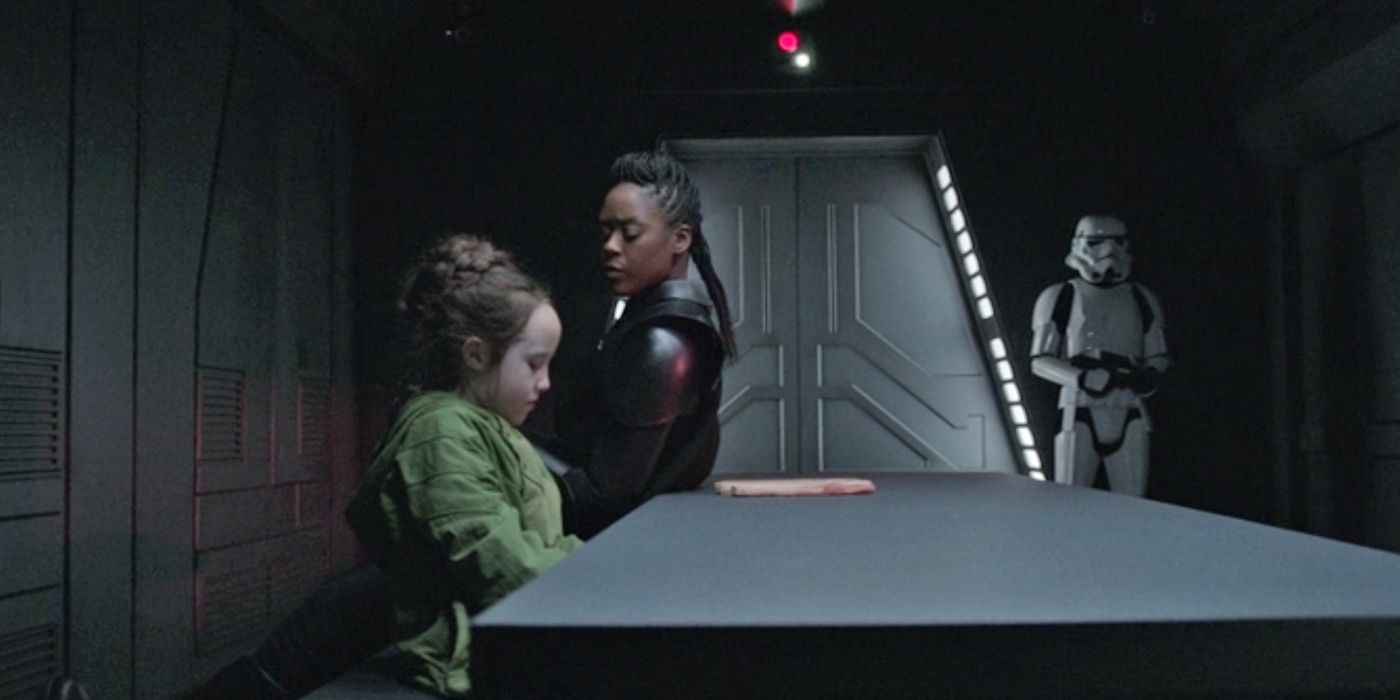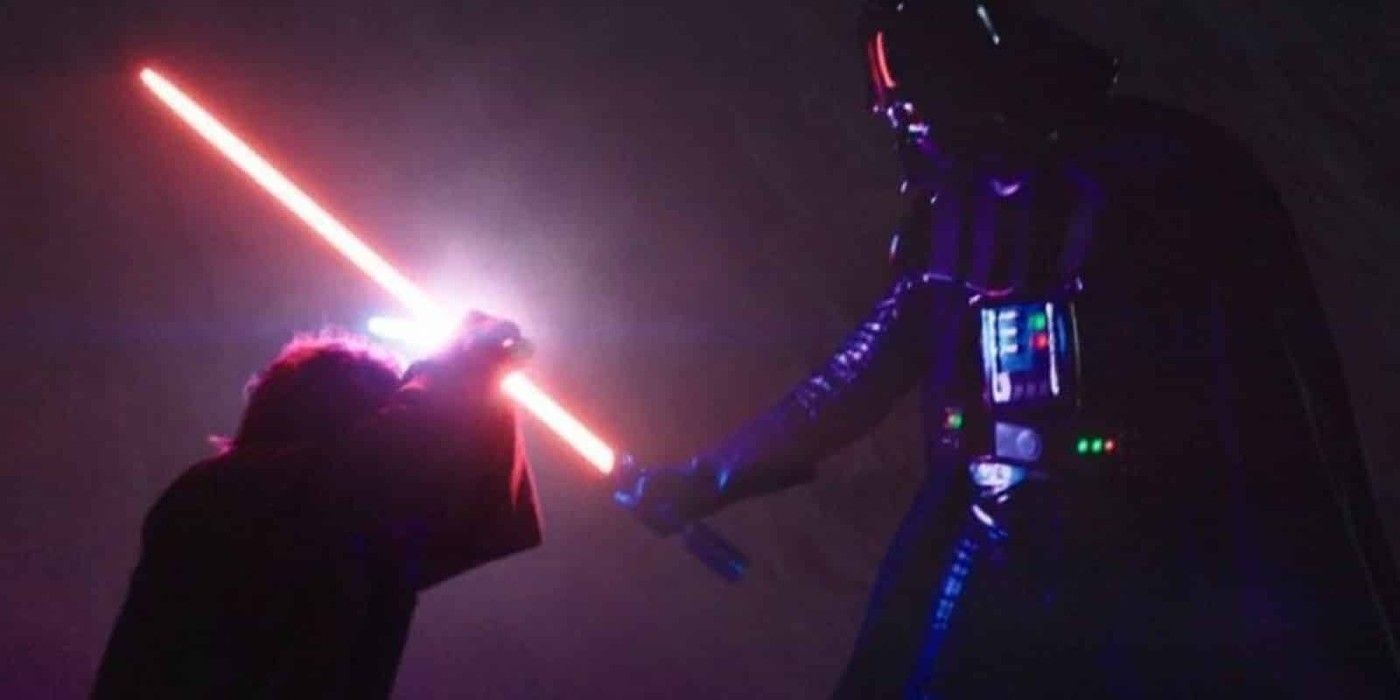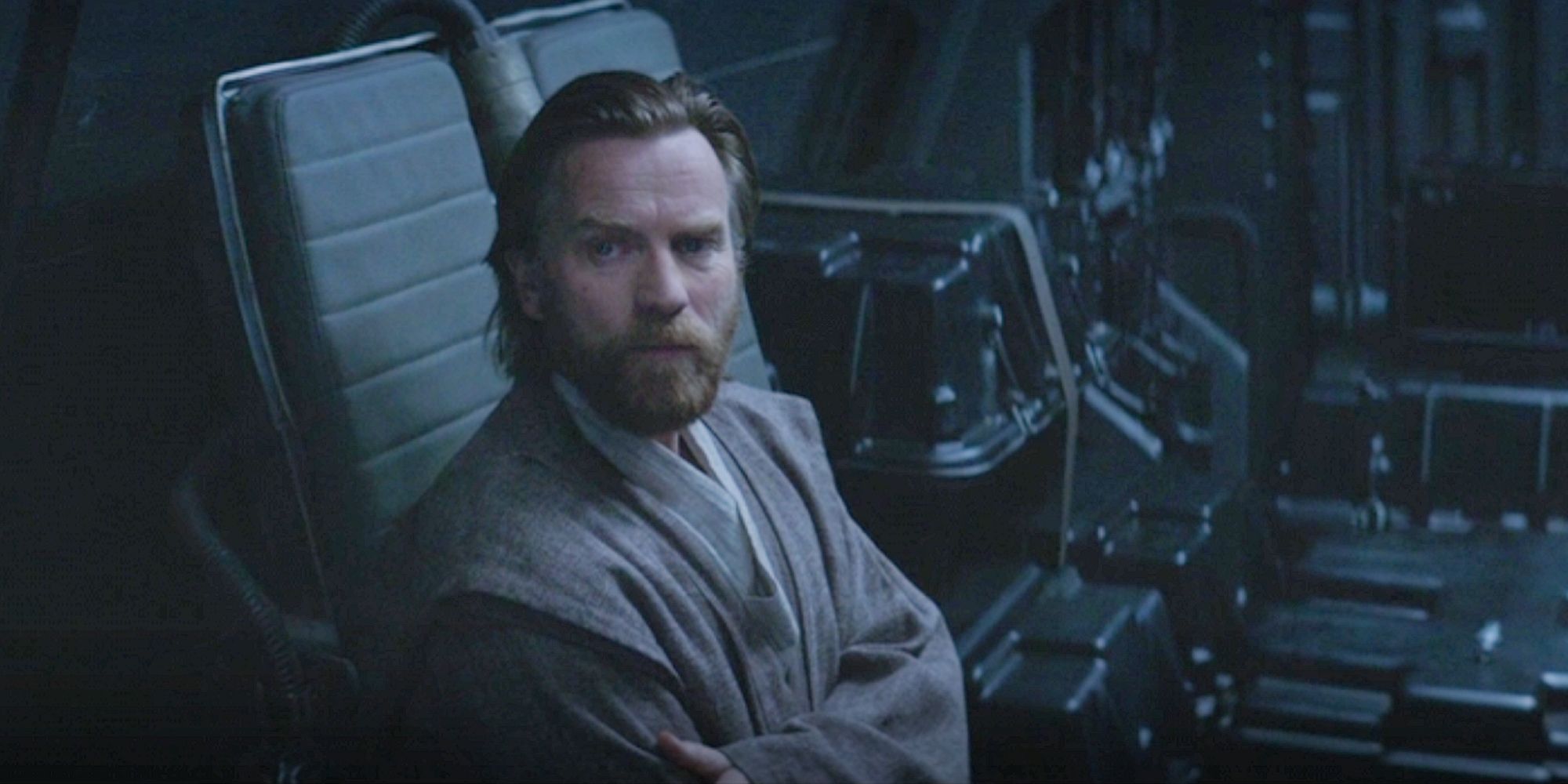The following contains spoilers for Obi-Wan Kenobi Parts I through V on Disney+.
The Obi-Wan Kenobi series is very interesting, because it is the first Skywalker saga spinoff to feature the same actors. (All due respect to Anthony Daniels who has voiced C3PO in everything.) A new theory suggests that each episode of Obi-Wan Kenobi corresponds to a Star Wars saga film. “Part I” strongly references Episode I, The Phantom Menace, and so on. Does the theory hold water?
On one level, Obi-Wan Kenobi would have to heavily reference both the original and prequel trilogies. Kenobi is a central character in both sets of Star Wars films, and this story takes place smack dab in the middle of those eras. Things like the costuming on young Leia have also been noticed as corresponding to Carrie Fisher’s wardrobe from the original Star Wars films. The show certainly isn’t distancing itself from the movies. However, there are so many correlations between the films and the episodes in the show, that it must be intentional.
In “Part I,” we have a story that takes place primarily in two locations: Tatooine and a core system planet where everything is clean and bright, a planet also led by a queen. While Alderaan is not Naboo, the planets do share a similar quality that contrasts with the lived-in future aesthetic of Empire-era Star Wars. In both cases, it is a city that thrives despite the corrupt and ineffective institutions looking after its well-being.
Like the blockade in The Phantom Menace, the problem that afflicts Alderaan is something that’s just a part of a larger plan crafted by a dark side of the Force user to attack the agents of the light side. Also, both Leia and Reva are 10-year-old kids who got sent on a path just like Jake Lloyd’s Anakin.
In “Part II,” there is a very clear and intentional connection to Attack of the Clones, and it’s not Temuera Morrison’s cameo moment. Rather, in this episode, Obi-Wan Kenobi goes on a detective mission of sorts. Only now, he’s hunting Leia instead of tracing the origins of a bounty hunter’s dart. (Give us Dexter Jettster, you cowards!) Of course, there is the bounty hunter connection as well. Obi-Wan is hunting the bounty hunters who took Leia, but later he is the prime target of every bounty hunter in the city. While less epic than the showdown with Jango Fett, Obi-Wan does get into a fight with some bounty hunters that he doesn’t win, but he does survive.
There are other, looser connections to Attack of the Clones in Obi-Wan Kenobi “Part II.” There is, of course, the appearance of a destitute Clone Trooper begging for money. It’s a brief nod to the idea that after the war ended, the Empire did not take good care of the lifeforms they created to wage their war. In another nod to this, Obi-Wan tracks a down a Jedi imposter, played by Kumail Nanjiani. He’s not Count Dooku, a Sith masquerading as a former Jedi, pretending to be Jedi Master Syfo-Dias in order to create the Clone Army, but he’s still an impersonator. Lastly, we get a brief look at some spicy galactic nightlife, complete with a drug dealer pitching wares to Kenobi.
In “Part III” of Obi-Wan Kenobi, there is a massive parallel to Revenge of the Sith. Obi-Wan and Darth Vader cross lightsabers, but the battle looks more A New Hope than prequel-era combat. Still, there is much in this episode directly referencing the final chapter of the prequels. There is an appearance on Mustafar, where Vader’s castle is likely built very close to where he lost that fateful fight. It ends as a mirror of their last meeting, however. Obi-Wan is badly burned and rescued by an ally, while Vader leaves the job half done. Also, like he and Yoda in the film, Obi-Wan Kenobi only survives Mapuzo because of an undercover ally. Instead of Bail Organa, this time it is Indira Varma’s Tala.
There are other parallels as well, such as a dark side apprentice-like figure seeking approval from their master. While the Third Sister is not named as Vader’s Sith apprentice or even Grand Inquisitor, she is seeking his favor. In fact, much of this episode is about the rising power of the autocratic state, and how some folks prefer the Empire. During this scene is when Obi-Wan Kenobi talks to Leia about her mother, and this authoritarian nightmare was Padmé’s biggest fear.
In “Part IV” Obi-Wan Kenobi and some helpers have to rescue Princess Leia from a hidden fortress. Again, the comparison to A New Hope is one the storytellers are clearly inviting. For example, Obi-Wan hides from two Stormtroopers behind a pillar and uses a simple Force trick to distract them. There is also a joke in the episode that hearkens back to A New Hope. Obi-Wan swims into Fortress Inquisitorius, but when he exits into the hallway for the base he’s completely dry. This is very likely a reference to the scene after the trash compactor sequence in A New Hope. Mark Hamill said he was worried about continuity, because his hair wasn’t wet. Harrison Ford hilariously replied, “Hey kid, it ain’t that kind of movie.” He said if people noticed Mark’s hair, Star Wars was in big trouble.
There are other more subtle nods, such as the power of the Jedi finally “back” in the galaxy. When Obi-Wan escapes the fortress, he’s not fully balanced in the Force, but he’s definitely sharpened his skills. Also, there are a group of “Rebels” that launch a mission against the Empire for the first time. While not as selfish as Han Solo, O’Shea Jackson Jr.’s Roken is a reluctant hero pilot without whom the mission would’ve failed.
The parallels in “Part V,” are fairly straightforward as in this episode of Obi-Wan Kenobi the Empire strikes back in a big way. The folks on The Path are hiding in a base in a cave while under assault. There’s a scene where Stormtroopers are setting up a heavy cannon that looks very similar to one used in the second Star Wars movie. You also have Leia, much younger than her 22 years in Empire, trying to help her fellow Rebels flee, while almost not escaping herself. There is also the return of a powerful figure, a kind of Force mentor…though in this case it’s Rupert Friend’s Grand Inquisitor (who we knew wasn’t dead) and not the Force ghost of Kenobi himself. Lastly, we learn the connection that Vader has to a young, powerful character. Instead of his long-lost son, it’s Reva, who is indeed one of the younglings from the first scene of the series.
So, what’s next for the finale? Will there be Jabba the Hutt? Will we see the Emperor like we did in Return of the Jedi? The chances for parallels in the final original trilogy film are many, but we also know that at the start of the series, every character (save perhaps for Reva) has to end up right where they started.
See how Obi-Wan Kenobi honors the corresponding Star Wars film when the last two episodes debut on Disney+.



